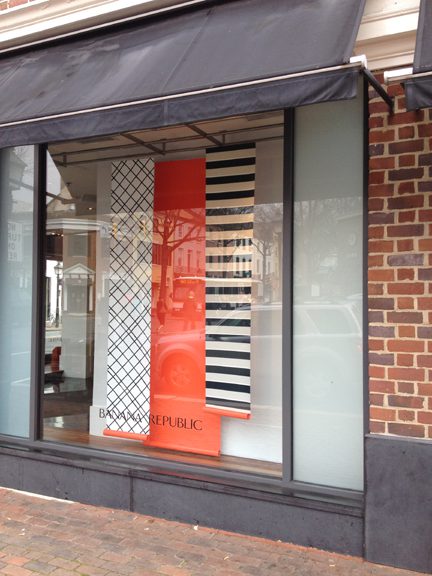Speaking of the perfect daytime storefront, this photo, actually taken with a smart phone by one of my clients, could not be more instructive. Daytime storefronts almost always have a double image and often a triple or more. Here there is a perfect picture of the surrounding area reflected with varying degrees of clarity on the storefront glass, and amplified by the fact that retailers keep their windows clean. The row houses across the street and classical entry to the building on the corner are reflected perfectly on the glass. Add the images of a passing car and bus, with pedestrians and trees in the street scape, and the entire reflected scene, freeze framed in the photo, becomes animated in real life. How does a retailer make the passerby look past the action on the glass long enough to see what is in the shop window? One way is to somehow force the storefront into shadow, providing of course there is something that is decidedly not shadow in the window. Observe how the banners become a simple colorful graphic on the top half to the photo where the window is in shadow from the awning. Impractical as this is, it does point to the often written about here, bright colored high contrast graphic as an effective solution. Landscape artists know that distant images in their paintings appear less saturated in color and lower in contrast than those close up in the scene. It is an observation taken from real life visual perception. We see detail by dint of contrast and color on that which is close. Exaggerating this concept can be a useful way of attracting visual attention. To the passerby very high contrast, colorful and larger than life images jump out of the normal field of vision. They attract attention, a basic function of the successful storefront.

